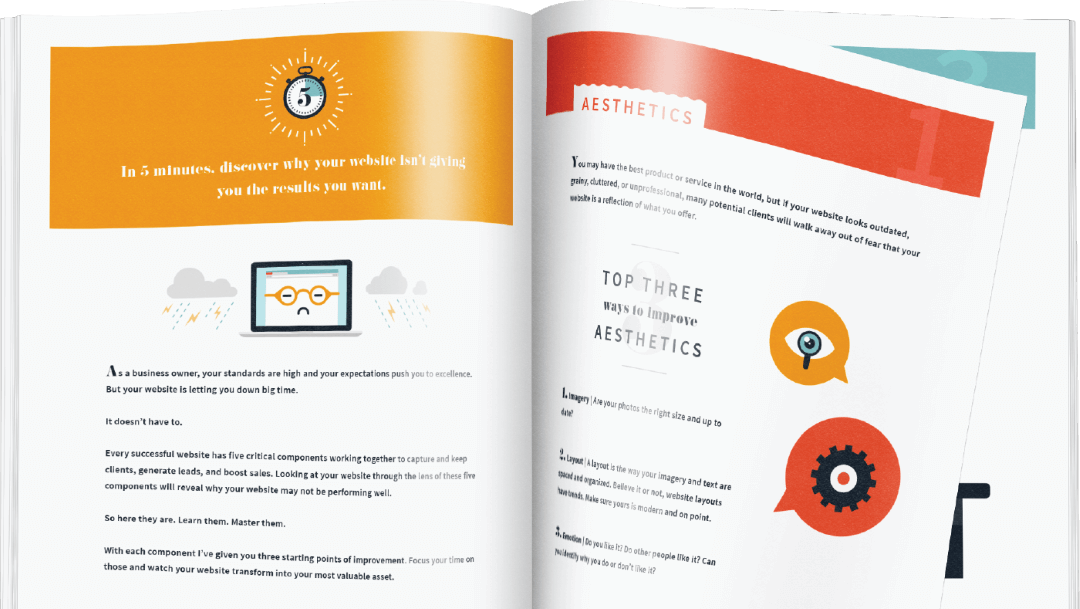Let me tell you a little story about blogging …
Once upon a time, it was 2004.
That was the year that my roommate told me about her friend’s blog. I believe my eloquent response was, “Blog? What??”
“Yeah”, said Roomate. “People get their own page on the internet and write about what they do every day and people read it and follow them.”
“Like … an online diary?”
“Yeah, like an online diary.”
Being the tech-savvy, trend setter that I CLEARLY WAS, I demanded to know who would be crazy enough to publish their diary on the internet. Share your personal life with TOTAL STRANGERS?? Why?? 😱
And then Facebook happened and we all started sharing every thought we ever had with random internet strangers.
And, in a hilariously ironic plot twist, I became a copywriter who blogs for a living. 😂
~The End~
So … why am I telling you this story?
Well, because blogging has changed just a little bit from the old Dear Diary format. During the first two decades of the 2000s, blogging became an absolutely essential source of marketing income for businesses, fueled by a parallel explosion in social media.
But now here we are in 2020 and a lot of people are asking if blogging is still relevant.
If it’s been done before and everyone is doing it, how can you hope to get your blog noticed? Is it still worth your time?
The short answer is YES.
The long answer is YES, but you have to be smart about it.
Blogging is still a great way to market your company
But only if you’re willing to put in some work and diversify the avenues you’re using to connect with your clients.
First off, understand what the purpose of a business blog is.
Obviously, the confessional, journaling format from the early 2000s isn’t relevant for promoting your business (but you should definitely still include personal content – more on that later).
The purpose of a company blog is to answer the specific questions web users are asking, and build a relationship with your ideal customer.
That’s it! That’s why your blog exists. But … you still need to know what to write about and how to connect your blog with readers, right?
Right.
So where to start? Here are some rules to keep in mind.
Rule #1: Create high-quality content that delivers valuable info
Don’t blog just because it’s “what you’re supposed to do” or because there’s space on your site that you’re not sure what to do with.
If you want your blog to get noticed, you need to know what information your ideal customer is already looking for.
(Hint: read this post about finding your ideal customer!)
After you’ve compiled a profile of your ideal customer, think about what problems they have or what questions they need to answer. Then, think about what keywords they might type into a search engine.
For example, say that you own an event planning company, specializing in weddings. Your ideal customer might be female, 25-40 years old, planning a wedding in the next 12-18 months.
So how is she going to ask Google for help?
Well, she might start by typing in something general such as, “how to plan a large wedding on a budget,” or a bit more specific like, “how to choose a catering company for a wedding.”
And this is where your blog comes in.
If you’re blogging smart, you’re going to be anticipating those search queries, tailoring your blog posts to answer specific questions and providing helpful, relevant content.
If you’re wondering why this is so important, the answer is SEO.
SEO or search engine optimization means tweaking your content to be as relevant to search queries as possible. If Google sees that your content is a strong match for a common query, your website will get bumped up toward the top of search results.
Placement near the top = increased traffic to your website.
Increased website traffic = more potential sales for your company.
Every time you create a blog post with high-quality, helpful content that answers the questions your ideal customer is asking, you’re more likely to draw that customer in and make the sale.
Rule #2: Make content both informative AND relational
You definitely need to provide answers and information on your blog, but that doesn’t mean you shouldn’t be personal, relatable and engaging as well.
A major change we’ve noticed in recent years, is a shift from product-based marketing to values-based marketing. In other words, today’s customers are looking at who you are just as much as what your product can do.
All the content on your site should point back to your core values as a company. If customers believe that you share their concerns and values, they are much more likely to engage and buy your product.
When you’re planning your blog posts, take the time to communicate more than just the facts. Sharing a personal anecdote, a story about your company’s work in the community or explaining the “why” behind your company goes a long way to building trust and relationship with potential customers.
Rule #3: Promote your blog posts on social media (always!!)
This is probably the easiest way to drive some traffic to your website. Seriously.
Write your post. Hit publish. Share it on your social media feeds. DONE.
Not only are you directly sharing your posts with people who are already following you (i.e. people who are already interested in your company), but it only takes about 30 seconds of your time.
And here’s another big bonus: it also keeps your feeds updated with new, relevant content which is key to attracting new followers.
However … (you knew there had to be a tiny catch, right?)
You need to understand how social media promotion works, in order to get the most out of it. Sharing your posts is great, but there are some secrets to promoting your brand successfully on social media.
Plus, if you’re just launching your company, you might not have figured out which social platforms are worth your time and energy.
If you need some pointers, check out this post I wrote about navigating social media as a business owner!
Rule #4: Optimize your entire website for maximum engagement
Think of your blog as an entry point.
It might be the first thing a potential customer sees when they click your link in Google results. But the customer journey shouldn’t end with that blog post!
What you want to see is increasing engagement and commitment from those visitors. The key here is to make those next steps as simple and inviting as possible.
Here are some tips to make this happen:
- Add a pop-up box that invites the reader to subscribe via email for further content.
- Ask readers to share their thoughts on the topic in the comments section or on social media.
- Link to additional posts or other content within the blog post.
- Add buttons to your blog post that connect users with your social media accounts.
Rule #5: Include clear Calls to Action in each blog post
Honestly, there’s nothing worse than having to dig through a company’s website trying to figure out how to learn more about a product.
I’m sure you’ve had this struggle right? You’re interested, you’ve got the money in hand …. But the website just isn’t set up for a seamless experience.
So. Frustrating. 😭
The way to avoid this is through clear Calls to Action – tell the customer what to do next.
This will obviously mean different things for every business, but here are a few examples:
- Download a resource.
- Place an order.
- Subscribe to your newsletter.
- Sign up for a webinar.
- Start a free trial of your product.
- Browse your online inventory.
Whatever the CTA – don’t be shy! Be specific about next steps and convert that site visitor into a loyal customer!
Rule #6: Be patient and be consistent
Don’t blog randomly every month or 6 and then complain that nothing is happening! Like anything else, blogging is a commitment.
You don’t have to blog every day or even every week, but you should definitely have a consistent schedule and stick to it. Keep a running list of topics that you want to cover and add or edit as needed.
Having a consistent schedule will keep your blog content fresh and updated (which also looks good to Google) and your readers will know how often to expect new content from you.
And patience here is really key. Remember, quick fix marketing rarely works. Knowing your customers and building a trusting, values-based relationship with them does. So plan on a blogging schedule that’s realistic for you, stick to it and keep your eyes focused on answering those key questions and building a loyal following.
Need help creating meaningful, relevant content?
It’s a big job. Trust me, I get it. 😅 Depending on your circumstances, you might want to outsource this part of your marketing plan to a pro.
Control Yours can help you put together an effective content and digital marketing plan for your company! Let us know how we can help!
See Also: Blogging is Like a Batch Of Cookies
And Also: Is Your Website Copy Losing You Money?


